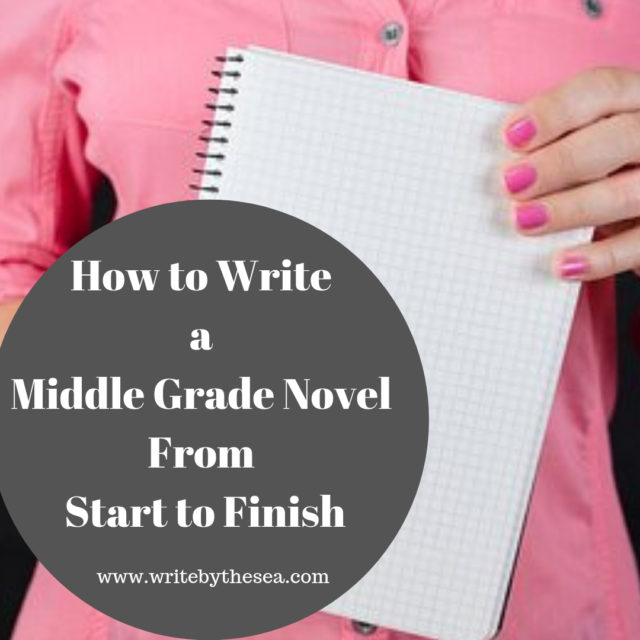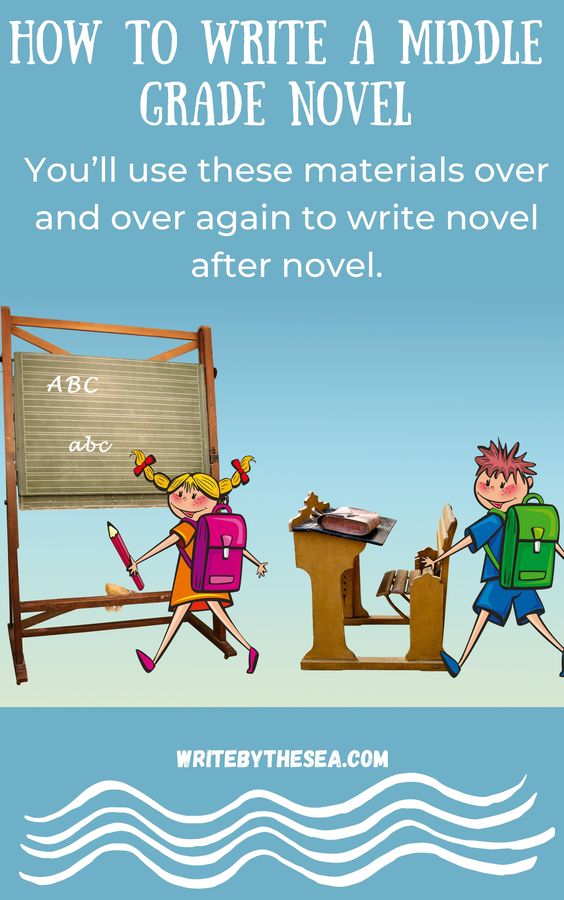Are you aching to write a middle grade novel but you don’t really know how to get started much less finish such a project?
Then here are a few tips to help you get going.
• Start with a main character – your protagonist.
Ask yourself – What does this person want more than anything in the world?
The way your protagonist strives to get whatever it is that he/she wants will become your major plot or storyline.
Your protagonist should not be perfect.
If he/she is, he/she won’t be believable, so don’t forget to give this character a few flaws.
But remember to give readers some reason to like this person.
Readers need to like your protagonist so they’ll care what happens to him/her.
If they don’t care what happens to him/her, they won’t want to read your book.


• Create another character (or situation) who will try to keep your main character from getting what he/she wants most.
This character (your antagonist) doesn’t have to be evil.
He or she just has to be at odds with your main character for some reason.
• Get to know the people who will be in your story REALLY, REALLY WELL.
To do this, create a profile for each of your main characters, or create a series of questions to ask your characters and then interview them to get their answers to these questions.
One of the questions you ask your protagonist should be “What do you want more than anything?”
Another helpful question to ask he/her is, “What are you most afraid of?”
As you’re asking these questions to each of your main characters, you’ll discover each of their strengths as well as their weaknesses.
• Decide on the point of view (POV) you will use to tell your story.
Your story should be told from your main character’s point of view.
But will you tell it from this character’s 1st person POV or his/her 3rd person POV?
Try writing the story from a 3rd person POV first.
After you’ve written a couple of chapters, check the voice of the story. Is it weak or strong?
If it’s weak, rewrite those chapters from the 1st person viewpoint of your main character and see if that strengthens the voice.
Now, here are some tips and tricks for plotting and writing your novel.
• When plotting your novel, start from the ending and work your way back to the beginning.
Where do you want your main character to end up at the end of the story?
What will he/she have accomplished and how will this character have changed by the end of the story?
Think of some big culminating event for your novel and create a “ticking clock” so your main character must solve the overall story problem before time runs out (things must happen quickly so you can sustain the dramatic tension throughout the story).
• Write the jacketflap copy for your book.
This should be just one or two paragraphs that let the reader know what the story will be about.
By summarizing this, YOU will get a better idea of EXACTLY what your story is about, too.
• Next, figure out all the steps it will take for your main character to get to the ending.
First, where does your character start out?
What does he/she want more than anything?
What happens next to change things a bit and make it a bit more difficult for your main character to get what he/she wants?
• Turn your plot into an outline of chapters.
Try starting with a 12 chapter outline, although your story may end up being longer than 12 chapters.
But 12 chapters keeps it manageable at the start.
This will also help you create your story in 3 acts of 4 chapters each.
• As you’re creating your outline, keep the plot triangle in mind.
Introduce your characters and setting at the bottom left side of the triangle.
Then, create rising action as you develop problems for your main character (your story starts moving up the triangle this way).
These problems all lead to the climax of your story (which is at the top of the triangle).
Generally, plan the climax for chapter 10 or 11 of the story, then resolve everything in the final chapter or so.
• For each chapter, think of what MUST happen in order for your main character to move closer to the climax and the ending of the story.
You’ll think of more complications brought about by the antagonist or other outside events as you do, so don’t worry about having all of this in place from the start.
• As you’re outlining, think in terms of scenes you can create for each chapter.
Plan for 1 to 3 different scenes per chapter, for the most part.
Consider your main character.
Based on what he or she is like, how can you use other characters to create an interesting subplot?
In middle grade, you don’t want too many subplots and they need to be fairly simple.
Many writers who start a middle grade novel get halfway through the story and then give up on the project.
That doesn’t have to be the case for you.
Here are a few tips to help you FINISH writing your manuscript.
• Don’t ask for feedback too soon.
Any criticism too early can confuse you or make you stop working on your story altogether.
Wait until you’re at least 6 chapters into your story before you ask for feedback.
Better yet, have a story synopsis to show your critique group, along with your first 6 chapters, so they can see where you are wanting the story to go.
• If you get stuck on a particular chapter, skip it for the time being and move on to the next chapter or even move several chapters ahead.
This will keep you writing, and sometimes you’ll figure out WHY you just couldn’t get a particular earlier chapter to work and you’ll be able to go back and write it once you have a later chapter in place.
• Don’t worry too much about having all the details for every chapter at first.
The first thing you must do is just get the entire first draft on paper.
This is the MOST important thing, so just keep writing.
• Avoid endlessly rewriting the first chapter or the first couple of chapters instead of moving ahead to new chapters.
Generally, writers are excited to write the first chapter or two.
And the writing flows easily.
After that, it starts to become more difficult and we think if we go back and rewrite those first few chapters, we’ll be able to write the next ones just as easily as we wrote the first ones.
But that’s a trap that keeps you from moving ahead.
• If you get so stuck that you just can’t seem to figure out anything for any new chapters, stop and move away from the chapters.
Get a pad of paper and start interviewing your main character-or the character who doesn’t seem to be doing what he/she needs to be doing to move the action forward.
You’re probably stuck because you just don’t know your characters well enough.
• Go back and write another chapter.
Keep following steps 2-5 until you finish the entire manuscript.
Just focus on writing one chapter at a time and eventually you’ll have the entire book completed.
Now you know how to write a middle grade novel—from start to finish.
Still need help?
Register for this self-study e-course from Nancy I. Sanders and learn How to Write a Middle Grade Novel in One Month!
Happy writing!







One Comment
Comments are closed.